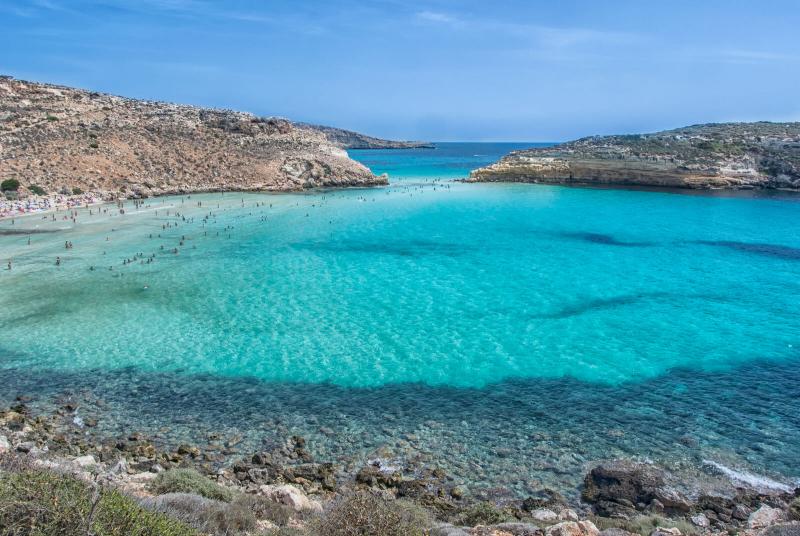In the last few years, Lampedusa has been more often associated with the migrant crisis than with its stunning natural beauty. And yet beautiful it is, with its rugged coastline, idyllic beaches and crystalline waters, set in the Mediterranean Sea, the largest of the Pelagie islands, closer to Tunisia than to Sicily.
Lampedusa is indeed home to some of the Mediterranean’s prettiest beaches, including the Isola dei Conigli, which often features in the top ten lists of Europe’s and the world’s most beautiful beaches (it was crowned the top beach in the world by Trip Advisor users). Located in the south-western portion of the island, the tiny islet is at the center of a large cove part of a protected natural reserve.
The origin of its name (Rabbit Island) is unsure: some say that, in the first nautical chart found, dated 1824, the area was called “Rabit Island”, referring to the isthmus that sometimes connects the islet to the coast: rabit in Arabic means connection. In subsequent maps, the name was misspelled, acquiring a b, and becoming rabbit, coniglio. According to others, the name is due to a colony of rabbits that came to live on the islet after the formation of the isthmus. When the sand bridge disappeared, the rabbits remained trapped, and, reproducing, they became so numerous that the place was named “Rabbit Island”.
The Isola dei Conigli is home to the royal seagull, with a population of about 100 pairs, and to a particular species of lizard that lives on the rock. Every year, between June and September, the sea turtles Caretta Caretta come here to lay their eggs at night. For this reason the beach is only accessible during the day, surveilled by volunteers.
Isola dei Conigli (and Lampedusa in general) are ideal for those who love snorkeling and diving. If swimming is not your thing, you can always go cruising and perhaps spot a dolphin or two.
Direct flights to Lampedusa are available from Milan, Bologna, Venice and Rome. Siremar and Ustica Lines connect the island by ferry from Trapani.








